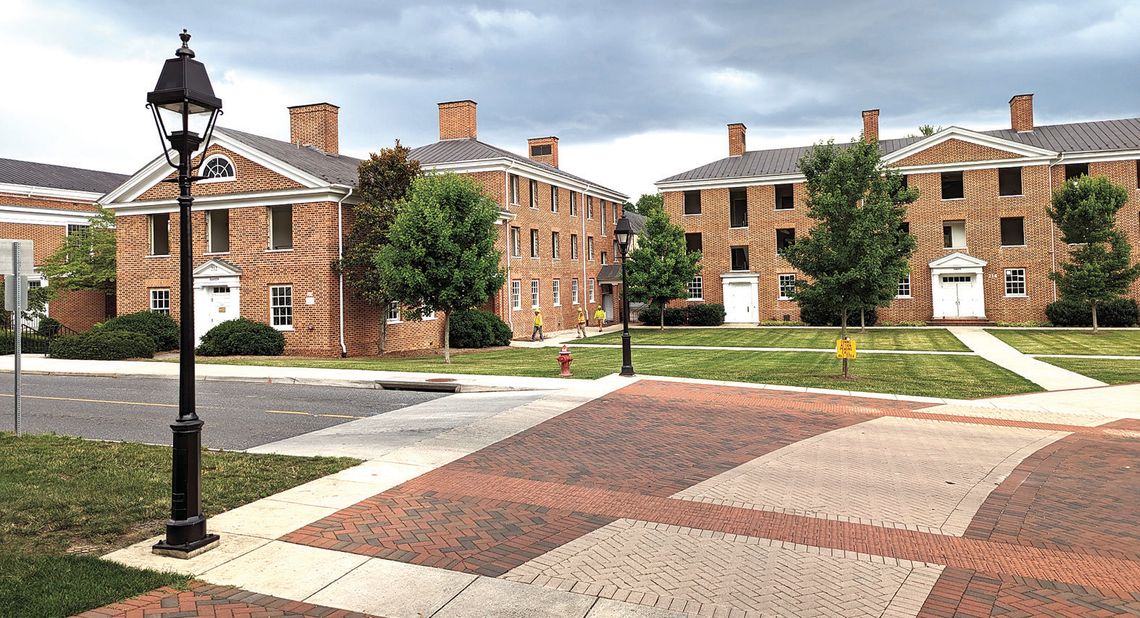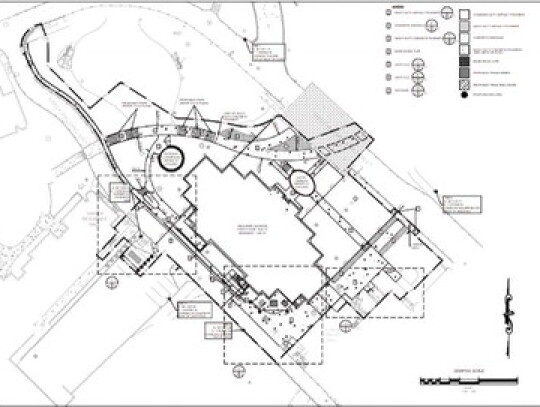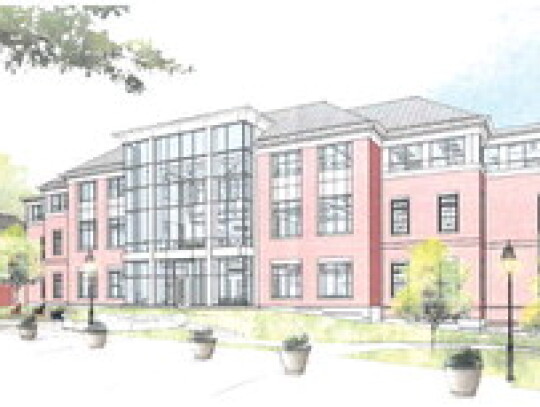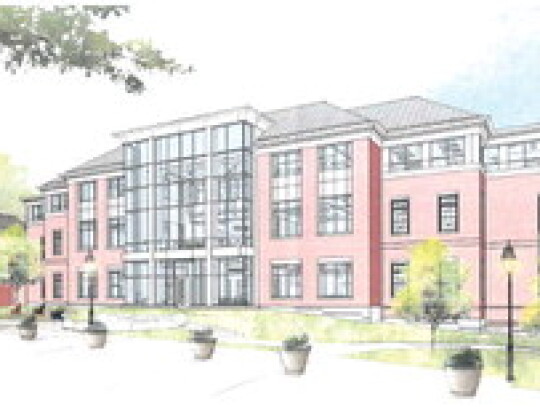The Lexington City Planning Commission last week approved a certificate of appropriateness and the site plan for the proposed expansion of Washington and Lee University’s Williams School of Commerce, Economics, and Politics.
The proposed 39,000-square-foot building will be built on Washington Street, replacing Baker and Davis halls, which are scheduled for demolition and will provide additional offices and classrooms for the school. Both motions passed in a 3-0 vote. Commission chair Blake Shester, Vice Chair Matt Tuchler and member Leslie Straughan recused themselves from discussing or voting on the applications, citing connections to the university (Shester and Tuchler are members of the faculty and Straughan’s husband is employed by the school). Commission member Pat Bradley was absent from the meeting.
City planner Arne Glaeser, at the start of the staff report for the certificate of appropriateness, noted that such certificates are generally only required in the city’s entrance corridors, which are along East Nelson Street (U.S. 60) and on South Main Street (U.S. 11), making this a bit of an odd request.
However, due to the fact that the parcel in question is in one of the city’s R-1 residential districts with an institutional overlay, a set of design standards are required and rather than coming up with a new set of design standards, the university opted to use the standards al- ready listed in the city code as a guide for the new building.
The standards considered for the certificate of appropriateness are divided into five categories: landscaping, signage, architecture, site planning, and lighting.
Glaeser recommended approval of the certificate as the building met all of the criteria: The proposed landscaping “is consistent with the remainder of the W&L campus,” the proposed signage “is minimal and primarily intended to provide directions,” and the architectural details “are generally consistent with other buildings on the W&L campus.”
The building will be set back from Washington Street, in approximately the same part of the parcel that currently holds Davis and Baker halls. Lighting on site will be “consistent with existing lighting features” on the campus and will meet the city’s dark sky requirements.
Commission member Shannon Spencer raised concerns about the number of trees in front of the building, indicating a drawing of the building in the Commission’s information packet that did not show many trees. She pointed out that one of the standards under the landscaping category was that the landscaping would “be used to soften the visual impact of the development and enhance the appearance of the area.”
Hugh Latimer, architect and university planner for W&L, spoke to the Commission, showing plans that indicated that several trees would exist on the parcel. Some are currently there and will remain, and several maple trees will be planted “which will grow into large trees,” he noted. The drawing Spencer indicated also didn’t accurately indicate how far back from Washington Street the building would sit.
Spencer also raised concerns about the design of the building, particularly regarding the center portion of the building along the front, which will be glass from top to bottom, particularly in relation to the surrounding buildings and the fact that the site is closer to downtown Lexington than some other buildings on campus.
“There was an interest by the university to have an expression of this new building to be a little more contemporary and not do an early 20th century classical revival building,” Latimer explained. “I think that we’ve provided a more contemporary expression of our neo-classical [style] without going too far from it, so it’s really a little bit of a compromise between the two styles.” He also noted that the college recently added an all-glass atrium to the Ruscio Center for Global Learning on campus, “so there’s precedent for this.”
Spencer commented that she liked how the Ruscio Center building looks, but that it was more on the interior of the campus, whereas the proposed building is closer to the rest of the city and expressed concern that that design could extend to other buildings in the area as the school renovates them, particularly Evans Hall, which is located next to the parcel in question.
“As a building on its own, it doesn’t trouble me in that way,” she said. “I’m just worried about the proximity and maintaining a Lexington feel.” She added that the proposed trees in the actual site plan would help “soften” the design of the building, so that did alleviate some of her concerns.
Commission members John Driscoll and Gladys Hopkins noted that they did not have any concerns with the design of the building.
“I don’t really have a problem with the increased glass,” Driscoll said. “It helps to invite you into the building and see inside. And in terms of its location, I’d say it’s far enough from the center of town to be seen as a building within the campus, so I’m okay with it as that.”
Hopkins noted that the area in question was not “a busy thoroughfare” in Lexington that was not generally traveled by residents or other members of the public.
Demolition of Baker and Davis halls is expected to begin in August with construction on the new building beginning this fall.
.jpg)






